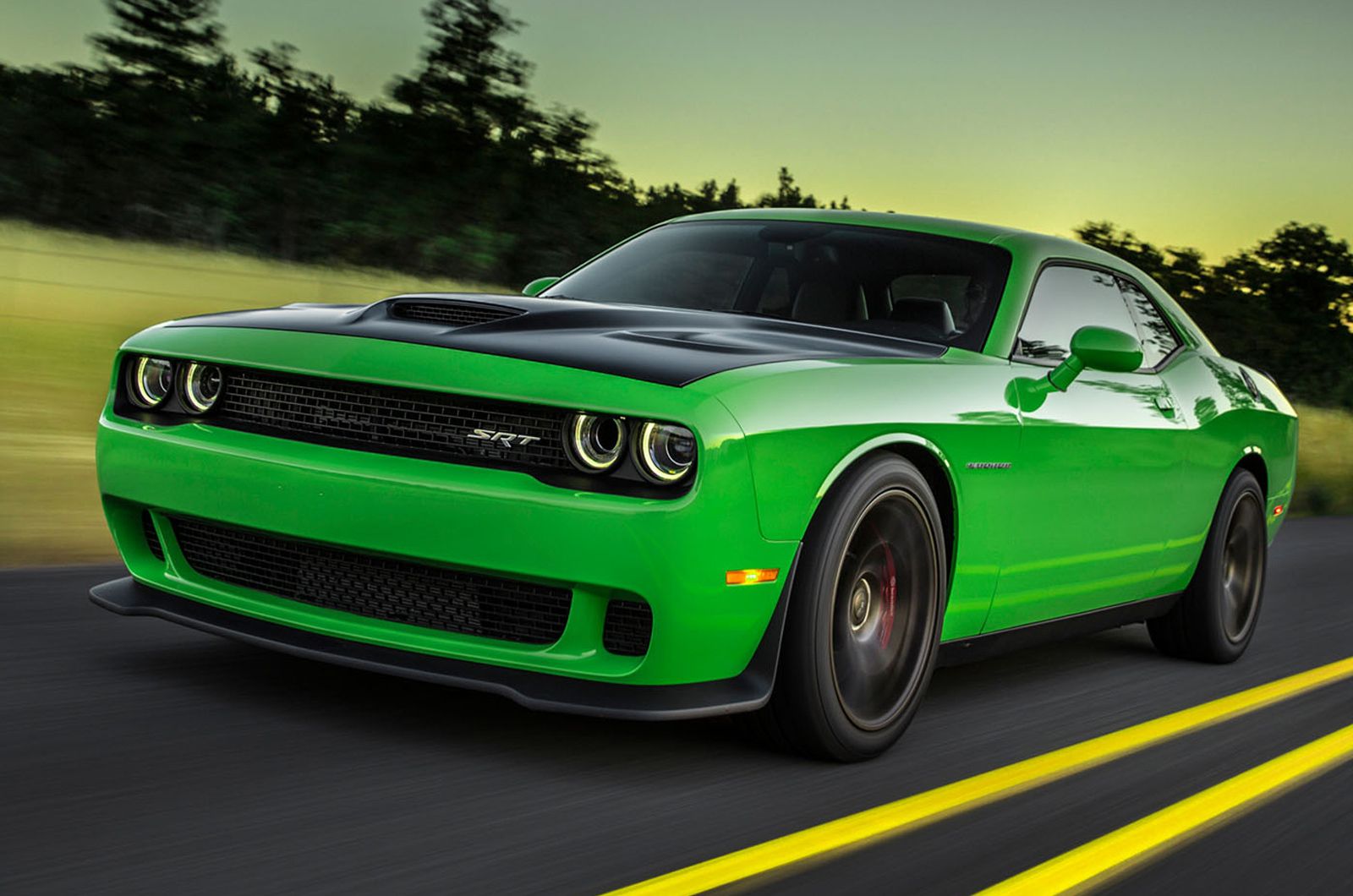
The muscle car, a symbol of raw power and American automotive passion, finds itself at a pivotal crossroads. For decades, these vehicles were synonymous with roaring V8 engines, aggressive styling, and the sheer thrill of speed, deeply rooted in a period where performance was paramount. However, as the automotive industry steers firmly towards sustainability and efficiency, the traditional muscle car formula is undergoing fundamental changes, challenging manufacturers to adapt without sacrificing their legendary spirit.
This isn’t merely an evolution; it’s a revolution driven by both regulatory demands and shifting consumer preferences. At the forefront, innovations are steering the muscle car journey toward electrification, promising an intriguing blend of classic aesthetics and cutting-edge technology. This creates unprecedented performance capabilities, even if it means moving away from the internal combustion engines that have long defined the genre. The question isn’t if muscle cars will endure, but how they will embrace these technological advancements to maintain their allure for future generations.
In this dynamic landscape, a new generation of muscle cars is emerging, blending heritage with avant-garde innovation. These vehicles aren’t just about brute force; they’re about redefining what power means in the 21st century, offering a driving experience that’s both thrilling and sustainable. We’re witnessing a fascinating blend of retro inspiration and futuristic flair, ensuring that the legacy of these iconic machines continues, albeit through a decidedly different lens. Let’s delve into some of the most anticipated and transformative models shaping this exciting new chapter.
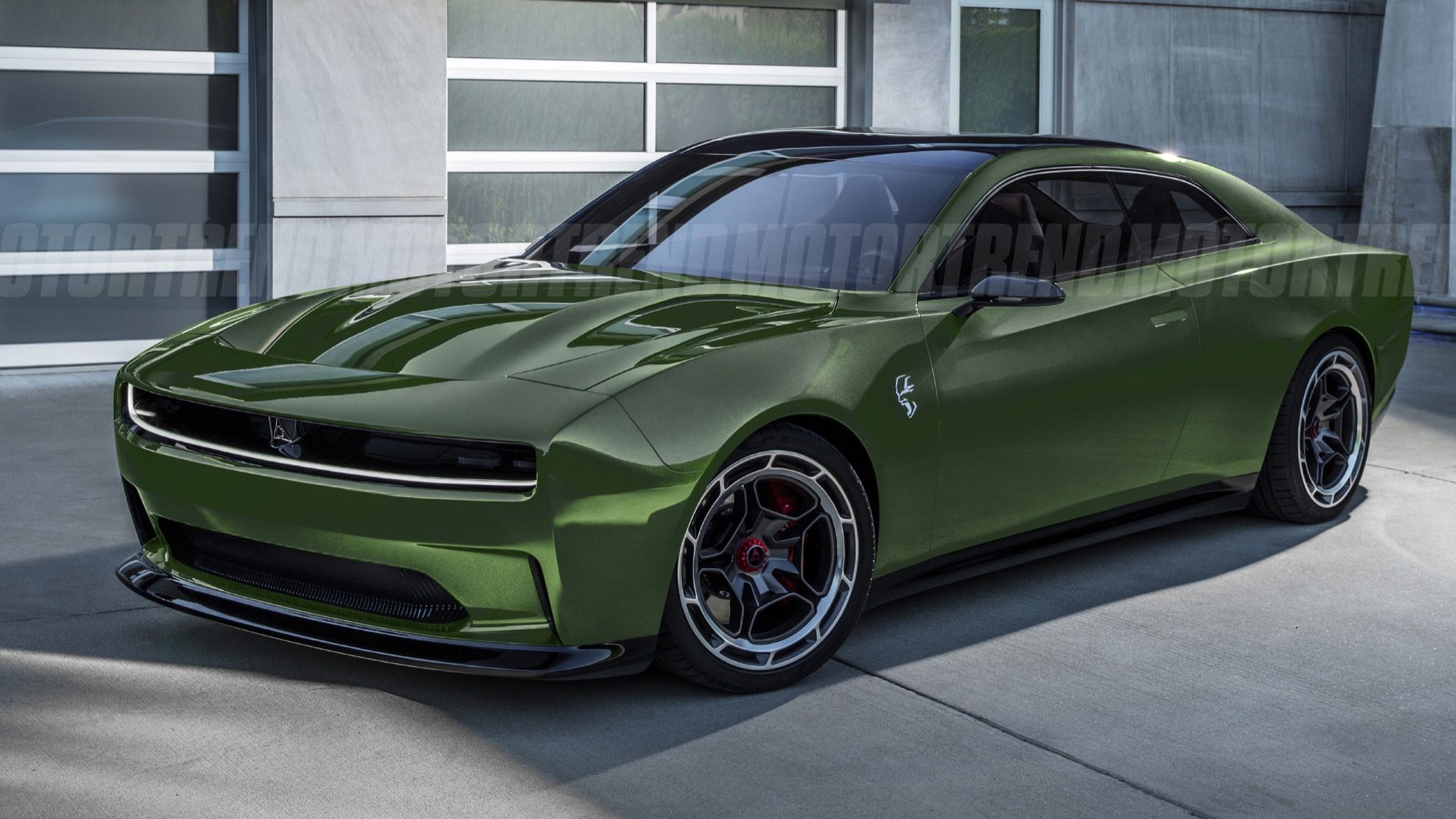
1. **Dodge Charger Daytona SRT EV**Marking a profound shift from traditional muscle car paradigms, the Dodge Charger Daytona SRT EV is poised to be the first and, for a time, only fully electric muscle car on the streets. Scheduled for launch in 2024, this model is not just an addition but a direct replacement, stepping into the formidable shoes of the HEMI-powered Challenger and the existing Charger lineup. It’s an ambitious declaration from Dodge, signaling a steadfast commitment to an electrified future while striving to preserve the very soul of muscle car performance.
This pioneering electric muscle car embraces a retro-inspired two-door Charger design, echoing the iconic lines of the 1960s and ’70s, offering far more than just a nostalgic nod to the past. Dodge has gone to considerable lengths to ensure that while the powertrain is radically new, the spirit of classic muscle remains intact. Its power output is meticulously calibrated to be on par with today’s lower-end muscle cars, yet it leverages the instant torque inherent to EVs for rapid, exhilarating acceleration. The coupe silhouette and an aggressive front wing unmistakably reinforce its muscle car DNA.
Beyond its visual and performance attributes, Dodge is innovating to replicate the traditional driving experience through technologies like an innovative exhaust system and a unique transmission. While specific range figures are still being kept under wraps, the vehicle is expected to ride on the advanced STLA Large platform, which boasts the capability of delivering up to 500 miles per charge. The ultimate test will be whether Dodge can truly win over the die-hard muscle car enthusiasts, but the Charger Daytona SRT EV undeniably stands as a monumental and audacious undertaking in automotive evolution.
Car Model Information: 2015 Dodge Challenger SXT Plus
Name: Dodge Charger
Caption: 2024 Dodge Charger Daytona R/T
Manufacturer: Dodge
Production: 2024–present
ModelYears: 2024–present
Assembly: Windsor, Ontario
Designer: Ralph Gilles
Class: Full-size car
BodyStyle: liftback
Layout: ubl
Platform: STLA Large
Engine: ubl
Transmission: ubl
Motor: ubl
Range: ubl
Battery: Lithium nickel manganese cobalt oxides
Wheelbase: cvt
Length: cvt
Width: cvt
Height: cvt
Weight: cvt
Predecessor: ubl
Categories: All-wheel-drive vehicles, All stub articles, Articles with short description, Cars introduced in 2024, Coupés
Summary: The eighth-generation Dodge Charger is a full-size car manufactured and marketed by Stellantis North America under the Dodge marque. It was introduced as a production model in March 2024, following appearances of nearly identical concept cars in 2022. It is the first Dodge vehicle to be available with a battery electric powertrain, marketed as the Charger Daytona. A gasoline-powered version called the Charger Sixpack will be available in late 2025, equipped with the 3.0-liter inline-six Hurricane engine.
The eighth-generation Charger is available in three-door and five-door body styles, with the former acting as a replacement to the third-generation Challenger.
Get more information about: Dodge Charger (2024)
Buying a high-performing used car >>>
Brand: Dodge Model: Charger Daytona SRT EV
Price: $16,467 Mileage: 95,860 mi.
Read more about: Uncovering the Apex of Automotive Rarity: 14 Limited-Production Muscle Cars You’ll Likely Only Dream Of
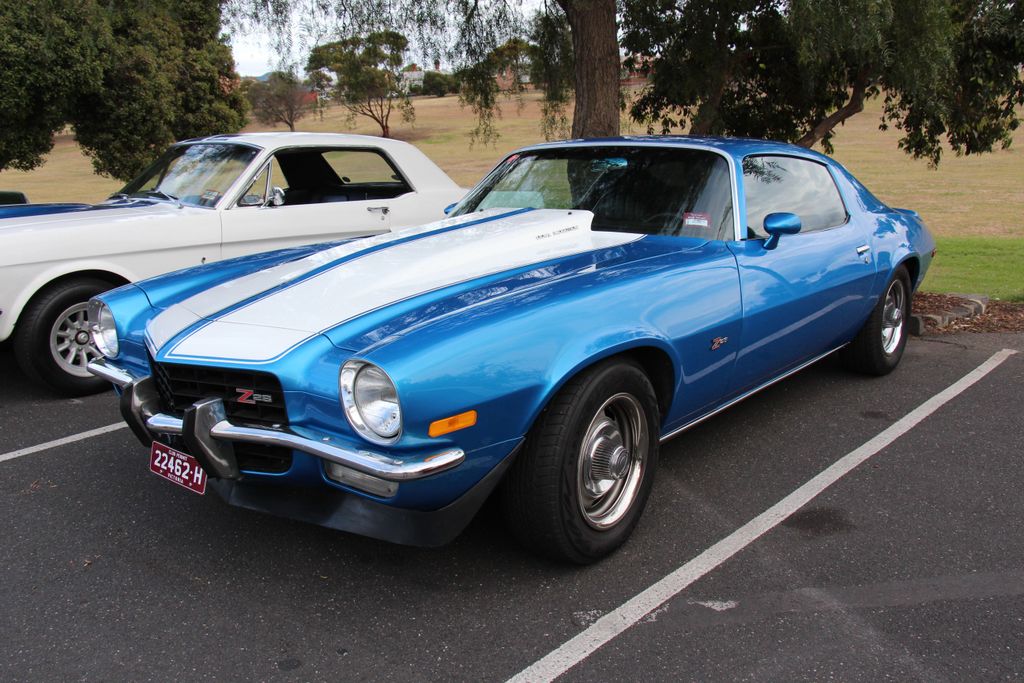
2. **The Chevrolet Camaro**The roar of the sixth-generation Chevrolet Camaro is nearing its sunset, with General Motors bringing production to an end with the 2024 model year. For those who haven’t yet secured an order, the chances of acquiring one of these beloved machines are rapidly dwindling, as production concluded earlier than initially expected. Special editions, such as the Garage 56 and Panther Collector’s Edition, are serving as a poignant, final farewell to a nameplate deeply embedded in American automotive culture.
This isn’t the first time the Camaro has faced such a fate; its fourth-generation model was last produced in 2002, only to be gloriously revived in 2010 with the immensely popular fifth-generation iteration. While Chevrolet has offered a glimmer of hope, stating that “this is not the end of the Camaro’s story,” industry speculation points strongly towards any future iteration being an all-electric vehicle. This move reflects the broader automotive trend and GM’s strategic pivot towards electrification across its lineup.
Precise EV specifications for a potential future Camaro remain unknown, but we can infer certain details based on GM’s existing Ultium platform, which also underpins the formidable Hummer EV. However, given the Hummer EV’s six-figure price tag, it is widely anticipated that any potential Camaro EV would likely offer only a fraction of its performance specifications. This strategic positioning could help maintain the Camaro’s longstanding reputation for delivering robust performance at a relatively affordable price point. There’s even speculation that Chevrolet might evolve the Camaro into a sub-brand, akin to what’s rumored for the Corvette, expanding its reach beyond a single model. Yet, the most probable outcome, echoing Dodge’s recent redefinition of the Charger as a coupe, is that the Camaro will return as a sedan. Any of these innovative approaches, if executed correctly, could significantly boost sales and ensure the Camaro’s enduring legacy, proving that time will ultimately reveal this bold new chapter for one of America’s most iconic muscle cars.
Car Model Information: 1968 Chevrolet Camaro
Name: Chevrolet Camaro
Manufacturer: Chevrolet
Production: 1966–2002,2009–2023
ModelYears: 1967–2002,2010–2024
Class: Pony car
BodyStyle: coupe,convertible
Platform: GM F platform,GM Zeta platform,GM Alpha platform
Layout: Front-engine, rear-wheel-drive layout
Categories: 1970s cars, 1980s cars, 1990s cars, 2+2 coupés, 2000s cars
Summary: The Chevrolet Camaro is a mid-size American automobile manufactured by Chevrolet, classified as a pony car. It first went on sale on September 29, 1966, for the 1967 model year and was designed to compete with the Ford Mustang. The Camaro shared its platform and major components with the Firebird, produced by General Motors’ Pontiac division that was also introduced for the 1967 model year.
Four distinct generations of the Camaro were developed before production ended in 2002. The nameplate was revived on a concept car that evolved into the fifth-generation Camaro; production started on March 16, 2009.
Production of the sixth generation of the Camaro ended in December 2023, for the 2024 model year.
Get more information about: Chevrolet Camaro
Buying a high-performing used car >>>
Brand: Chevrolet Model: Camaro
Price: $79,980 Mileage: 1,713 mi.
Read more about: Lost Legends: 14 Classic Car Features We Desperately Miss (and Why They Vanished)

3. **The Ford Mustang**For many devoted muscle car enthusiasts, the concept of an electric future for their cherished rides can be a particularly challenging prospect to embrace. The very essence of a muscle car, for purists, is inextricably linked to its thunderous V-8 engine, its aggressive, unmissable exhaust note, and the tactile engagement of a manual transmission. These, for a significant segment of the community, are non-negotiable traits that define the genre. It comes as no surprise, then, that many Mustang purists have largely expressed reservations or outright rejected the Mustang Mach-E, which, despite bearing the iconic Mustang name, notably lacks the traditional design cues and performance characteristics that have long defined the legendary pony car.
However, a new generation of the traditional Mustang is not just on the horizon; it is here, with the formidable Dark Horse model leading the charge and setting a new benchmark for performance. In an era where Dodge and Chevrolet are decidedly shifting gears toward electric muscle, Ford is uniquely positioned to potentially go down in history as the brand that produced both the very first and, quite possibly, the last truly traditional muscle car as we know it. As of now, there is no direct successor to the celebrated GT500 or GT350 available, which means the Dark Horse stands as the last Mustang to proudly feature a big V-8 engine, the visceral engagement of a manual transmission, and the quintessential classic coupe design—elements that collectively define what many consider a true muscle car.
The chances of seeing a new GT350 are unfortunately slim, given that Ford has historically produced only two generations of this specific variant, and the latest GT500 already comes exclusively with an automatic transmission, marking a shift in performance philosophy. That said, it is increasingly difficult to imagine the internal combustion Mustang sticking around indefinitely, especially within today’s rapidly evolving automotive landscape, where electrification is becoming paramount. This raises a compelling question: if Ford were to fully follow in the footsteps of Dodge and Chevrolet by wholeheartedly embracing electrification for its core muscle car, could they deliver an electric vehicle with even more raw muscle and emotional resonance than the Mach-E, thereby satisfying both modern demands and the enduring spirit of the Mustang?
Car Model Information: 1966 Ford Mustang Base
Name: Ford Mustang
Caption: 2018 Ford Mustang GT 5.0
Aka: Ford T5 (Germany)
Manufacturer: Ford Motor Company
Production: March 1964 – present
ModelYears: 1965–present
Class: Unbulleted list
BodyStyle: Unbulleted list
Layout: Front-engine, rear-wheel-drive layout
Categories: 1970s cars, 1980s cars, 1990s cars, 2+2 coupés, 2000s cars
Summary: The Ford Mustang is a series of American automobiles manufactured by Ford. In continuous production since 1964, the Mustang is currently the longest-produced Ford car nameplate. Currently in its seventh generation, it is the fifth-best selling Ford car nameplate. The namesake of the “pony car” automobile segment, the Mustang was developed as a highly styled line of sporty coupes and convertibles derived from existing model lines, initially distinguished by “long hood, short deck” proportions.
Originally predicted to sell 100,000 vehicles yearly, the 1965 Mustang became the most successful vehicle launch since the 1927 Model A. Introduced on April 17, 1964 (16 days after the Plymouth Barracuda), over 400,000 units were sold in its first year; the one-millionth Mustang was sold within two years of its launch. In August 2018, Ford produced the 10-millionth Mustang; matching the first 1965 Mustang, the vehicle was a 2019 Wimbledon White convertible with a V8 engine.
The success of the Mustang launch led to multiple competitors from other American manufacturers, including the Chevrolet Camaro and Pontiac Firebird (1967), AMC Javelin (1968), and Dodge Challenger (1970). It also competed with the Plymouth Barracuda, which was launched around the same time. The Mustang also had an effect on designs of coupes worldwide, leading to the marketing of the Toyota Celica and Ford Capri in the United States (the latter, by Lincoln-Mercury). The Mercury Cougar was launched in 1967 as a unique-bodied higher-trim alternative to the Mustang; during the 1970s, it included more features and was marketed as a personal luxury car.
From 1965 until 2004, the Mustang shared chassis commonality with other Ford model lines, staying rear-wheel-drive throughout its production. From 1965 to 1973, the Mustang was derived from the 1960 Ford Falcon compact. From 1974 until 1978, the Mustang (denoted Mustang II) was a longer-wheelbase version of the Ford Pinto. From 1979 until 2004, the Mustang shared its Fox platform chassis with 14 other Ford vehicles (becoming the final one to use the Fox architecture). Since 2005, Ford has produced two generations of the Mustang, each using a distinct platform unique to the model line.
Through its production, multiple nameplates have been associated with the Ford Mustang series, including GT, Mach 1, Boss 302/429, Cobra (separate from Shelby Cobra), and Bullitt, along with “5.0” fender badging (denoting 4.9 L OHV or 5.0 L DOHC V8 engines).
Get more information about: Ford Mustang
Buying a high-performing used car >>>
Brand: Ford Model: Mustang
Price: $32,991 Mileage: 98,811 mi.
Read more about: The 19 Greatest American Cars That Defined a Generation
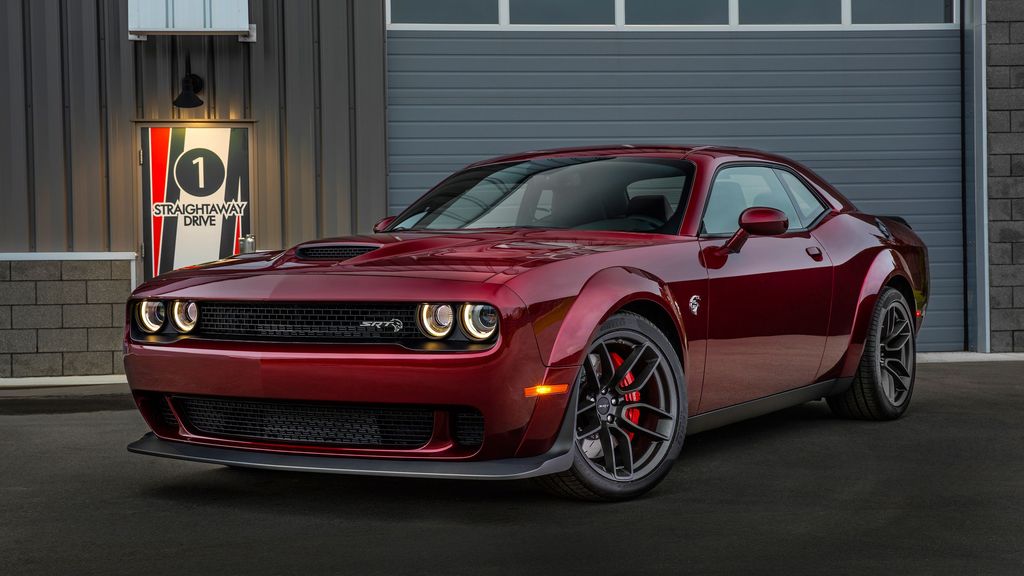
4. **The Dodge Challenger**It feels almost surreal to contend with the fact that the Dodge Challenger, a model that has remained remarkably consistent and largely unchanged for nearly a decade and a half, is about to be discontinued. Perhaps the historical context that it has been axed before makes this current decision feel slightly less shocking or final for long-time enthusiasts. Of course, this discontinuation strictly applies to new production models, as Dodge’s iconic high-horsepower lineup meticulously transitions to an all-electric future, reflecting a broader industry-wide movement towards sustainable mobility.
With the Dodge Charger Daytona EV now set to debut and herald this new electric era, the immediate likelihood of the Challenger making a triumphant return in its current form seems slim. However, automotive history is often full of unexpected twists and turns, and it’s important to remember that both the Charger and Challenger once coexisted harmoniously as formidable coupes. This historical precedent arguably leaves the door ajar for a potential, albeit likely electrified, comeback at some point in the future. Dodge is notably making a much more extensive and celebratory effort to send off the Challenger compared to General Motors’ approach with the Camaro.
This robust farewell, characterized by a series of highly coveted limited-edition releases, strongly suggests that these models may indeed mark the true end of the Challenger as enthusiasts have come to know and adore it. In a heartfelt nod to tradition, even the manual transmission has made a welcome return as an option on lower trims, a feature that Chevrolet has consistently offered across the Camaro lineup, even at its most potent performance levels. Still, saying a definitive goodbye to the Challenger is no easy task for its legions of fans. Whether gracing the streets in its widebody or narrow form, this car has consistently proven to be a dominant and revered force, both in daily driving and on the drag strip. Competition has always been a powerful catalyst for performance advancements, and if the Charger Daytona EV proves to be a resounding success, it’s not entirely beyond the realm of possibility that we could witness the emergence of a new Challenger in the future, one that has been thoughtfully re-envisioned through an electrifying lens.
Car Model Information: 2022 Dodge Challenger SXT
Name: Dodge Challenger
Production: 1969–1974,1977–1983,2008–2023
ModelYears: 1970–1974,1978–1983,2008–2023
Caption: 2015 Dodge Challenger SRT Hellcat
Manufacturer: Dodge
Categories: 1970s cars, 1980s cars, 2000s cars, 2010s cars, 2020s cars
Summary: The Dodge Challenger is the name of three generations of automobiles produced by the American automobile manufacturer Dodge. However, the first use of the Challenger name by Dodge dates back to 1959 for marketing a “value version” of the full-sized Coronet Silver Challenger.
From model years 1970 to 1974, the first-generation Dodge Challenger pony car was built using the Chrysler E platform in hardtop and convertible body styles sharing significant components with the Plymouth Barracuda.
The second generation, from model years 1978 to 1983, was a rebadged Mitsubishi Galant Lambda / Sapporo, a coupe version of an economical compact car.
The third and current generation is a full-size muscle car that was introduced in early 2008 initially as a rival to the evolved fifth generation Ford Mustang and the fifth generation Chevrolet Camaro.
In November 2021, Stellantis announced that the 2023 model year would be the final model year for both the LD Dodge Charger and LA Dodge Challenger, as the company will focus its plans on electric vehicles rather than fossil fuel-powered vehicles, due to tougher emissions standards required by the Environmental Protection Agency for the 2023 model year. Challenger production ended on December 22, 2023, and the Brampton, Ontario, assembly plant will be re-tooled to assemble an electrified successor.
Get more information about: Dodge Challenger
Buying a high-performing used car >>>
Brand: DODGE Model: CHALLENGER
Price: $22,124 Mileage: 62,456 mi.
Read more about: IIHS Study Reveals The 17 Cars Where You’re Likely to Die
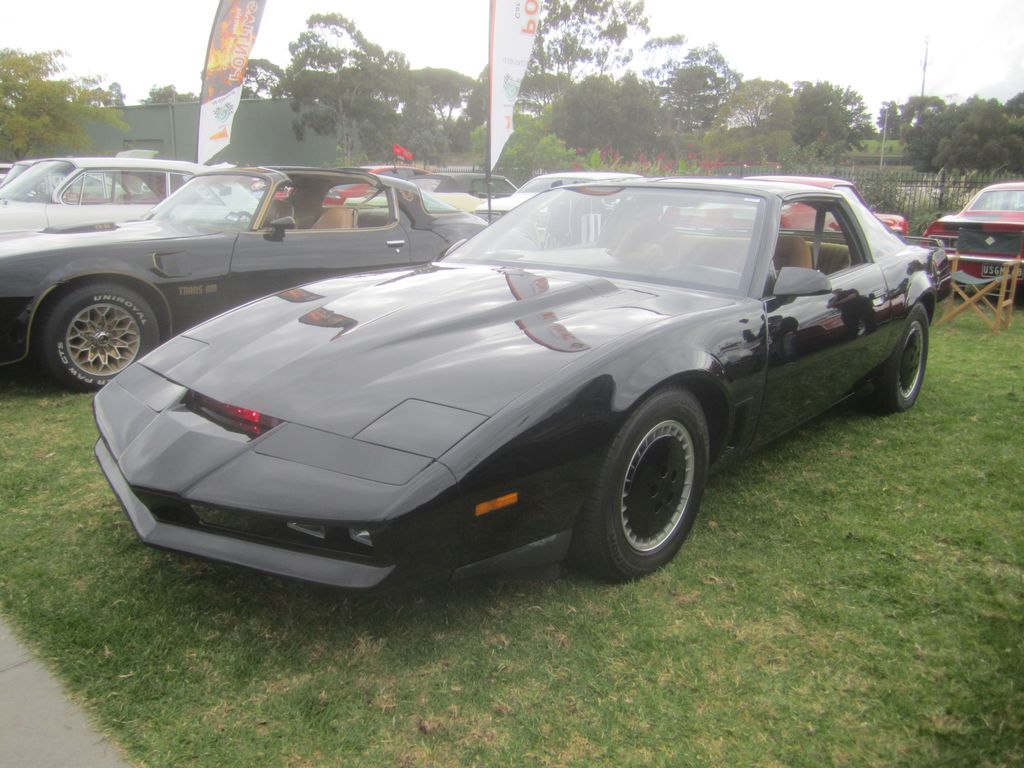
5. **The Pontiac Firebird**Now, we delve into a realm that transcends mere discontinued cars, entering the territory of entirely defunct brands, which admittedly makes the prospect of a revival seem like a long shot. Yet, the question lingers: how many times have we seen captivating concept versions of the Pontiac Firebird resurface over the years, tantalizing enthusiasts with what could be? And let’s not overlook the vibrant aftermarket conversion kits that ingeniously transform a fifth-generation Camaro into its Pontiac counterpart, a testament to the shared heritage and iconic F-body platform that both cars once proudly shared under the GM umbrella.
There is absolutely no doubt that enthusiasts across the globe would passionately welcome the Firebird making a comeback, especially alongside other vehicles that met a similar, unfortunate fate. If one desires a Firebird today, the realistic options are largely limited to meticulously searching for a well-preserved used model or turning to dedicated aftermarket builders for a modernized, bespoke version. Given the car’s undeniable cultural significance and its indelible mark in popular culture, notably in iconic films and television series like *Knight Rider* and *Smokey and the Bandit*, the argument for its return gains considerable weight. Its legacy is more than just automotive; it’s woven into the fabric of popular entertainment.
However, considering that the direct avenues for a new Firebird are scarce, and with the Chevrolet Camaro itself grappling with an uncertain future, an all-electric Firebird might paradoxically represent the most viable and exciting opportunity for a full-fledged revival. Embracing electrification could allow the Firebird to transcend its past constraints, offering a fresh narrative while retaining the aggressive styling and performance-oriented spirit that made it a legend. This approach could appeal to both nostalgic purists and a new generation of environmentally conscious performance enthusiasts, ensuring that the Firebird’s flame continues to burn brightly in the electrified automotive landscape.
Car Model Information: 1983 Pontiac Firebird Trans Am 2D Coupe
Name: Pontiac Firebird
Caption: The second, third, and fourth generations of,the Pontiac Firebird Trans Am
Manufacturer: Pontiac (automobile)
Production: February 23, 1967 – August 30, 2002
ModelYears: 1967 – 2002
Class: Pony car,Muscle car
Platform: GM F platform
Related: Chevrolet Camaro
Layout: Front engine, rear-wheel-drive layout
Categories: 1970s cars, 1980s cars, 1990s cars, 2000s cars, All articles with dead external links
Summary: The Pontiac Firebird is an American automobile built and produced by Pontiac from the 1967 to 2002 model years. Designed as a pony car to compete with the Ford Mustang, it was introduced on February 23, 1967, five months after GM’s Chevrolet division’s platform-sharing Camaro. This also coincided with the release of the 1967 Mercury Cougar, Ford’s upscale, platform-sharing version of the Mustang.
The name “Firebird” was also previously used by GM for the General Motors Firebird series of concept cars in the 1950s.
Get more information about: Pontiac Firebird
Buying a high-performing used car >>>
Brand: Pontiac Model: Firebird
Price: $22,991 Mileage: 38,257 mi.
Read more about: Lost Legends: 14 Classic Car Features We Desperately Miss (and Why They Vanished)
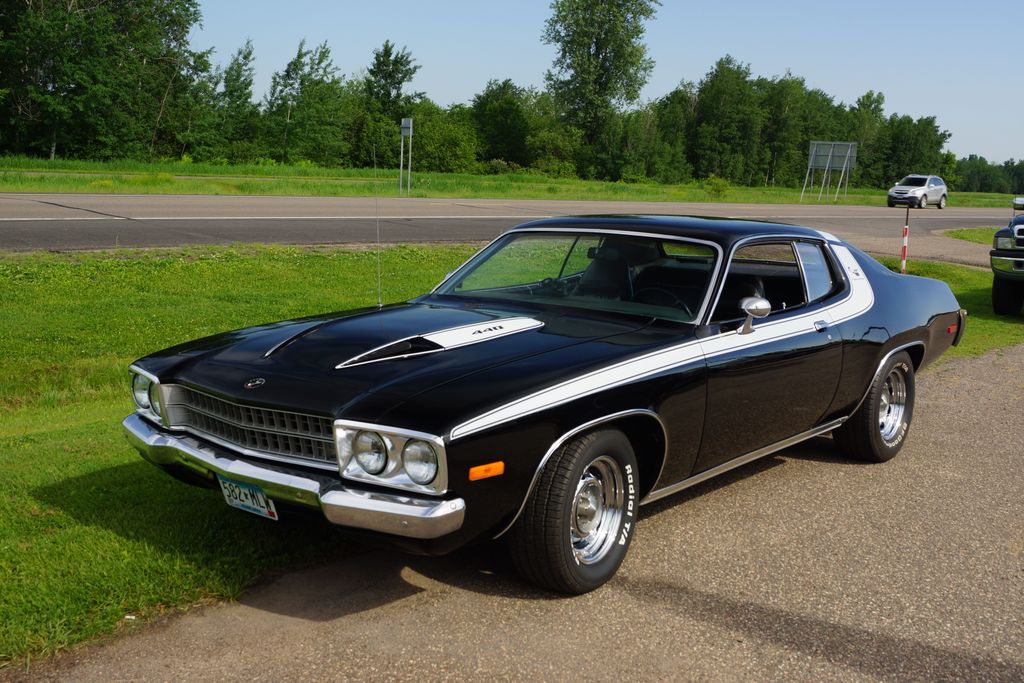
6. **The Plymouth Roadrunner**At this juncture, we venture into a more speculative realm, imagining a future where iconic Plymouth models might once again grace our streets. Yet, when one considers a vehicle like the 1970 Plymouth Roadrunner Superbird, its design brilliance appears undeniably ahead of its time. This radical, aerodynamically optimized styling possesses a timeless quality that could, quite remarkably, align perfectly with a modern electric vehicle powertrain, especially if the broader automotive community fully embraces the concept of high-performance electric muscle cars.
While the Superbird itself was a celebrated, albeit short-lived, one-year wonder, the standard Plymouth Roadrunner enjoyed a more extended production run from 1968 to 1980, serving as the very foundation for its NASCAR-focused sibling. This solid heritage positions the Roadrunner as a compelling candidate for a dramatic revival. With Fiat Chrysler Automobiles, now operating under the Stellantis umbrella, anything seems possible in the ever-evolving automotive landscape. Given that Dodge, which once shared a corporate lineage with Plymouth, has already made a significant splash by committing wholeheartedly to electric vehicles, the question arises: could a reborn, electrified Roadrunner be the next thrilling chapter in this transformation?
Car Model Information: 2015 Dodge Challenger SXT Plus
Name: Plymouth Superbird
Manufacturer: Plymouth (automobile)
Wheelbase: 115.8 in
Abbr: on
Length: Convert
Width: 76.4 in
Height: 61.4 in
Weight: Convert
Production: 1970
Assembly: Detroit
Class: muscle car,race car
BodyStyle: coupe
Platform: Chrysler B platform
Layout: FR layout
Engine: cvt,Chrysler Hemi engine,V8 engine,cvt,Chrysler RB engine#440,V8 engine
Related: Plymouth Road Runner,Dodge Charger Daytona
Transmission: Automatic transmission,TorqueFlite
Designer: Gary Romberg
Categories: 1970s cars, All articles with unsourced statements, Articles with short description, Articles with unsourced statements from March 2010, Commons category link is on Wikidata
Summary: The Plymouth Superbird is a highly modified, short-lived version of the Plymouth Road Runner with applied graphic images as well as a distinctive horn sound, both referencing the popular Looney Tunes cartoon character Road Runner. It was the factory’s follow-up stock car racing design, for the 1970 season, to the Dodge Charger Daytona of 1969, and incorporated many engineering changes and modifications (both minor and major) garnered from the Daytona’s season in competition.
The car’s primary rivals were the Ford Torino Talladega and Mercury Cyclone, a direct response to the Mopar aero car. It has also been speculated that a motivating factor in the production of the car was to lure Richard Petty back to Plymouth. Both of the Mopar aero cars famously featured a protruding, aerodynamic nosecone, a high-mounted rear wing and, unique to the Superbird, a horn mimicking the Road Runner’s signature “beep, beep.”
Superbirds equipped with the top-of-the-line 426 cu in (7.0 L) Hemi engine with a pair of four barrel Carter AFB carburetors (2x4bbl) producing 425 hp (317 kW) could accelerate from 0 to 60 mph (97 km/h) in 5.5 seconds.
Get more information about: Plymouth Superbird
Buying a high-performing used car >>>
Brand: Plymouth Model: Roadrunner Superbird
Price: $16,467 Mileage: 95,860 mi.
Read more about: The Enduring Magnetism of 1960s American Iron: A Deep Dive into the Decade’s Automotive Icons
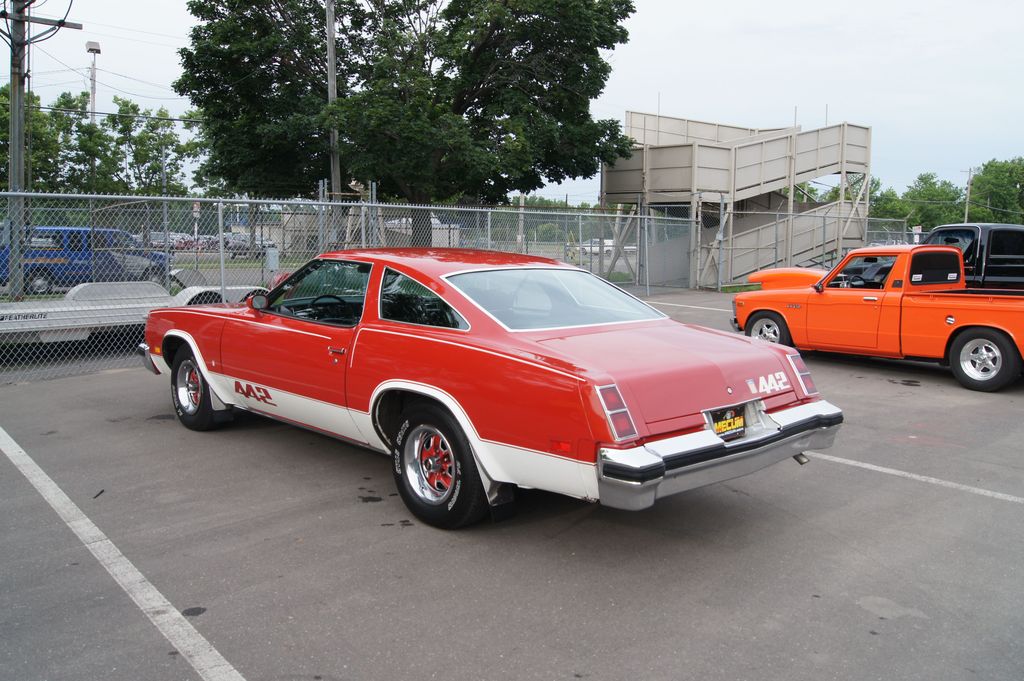
7. **The Pontiac GTO & Oldsmobile 442**The Pontiac GTO and the Oldsmobile 442 stand as two profoundly legendary muscle cars, each leaving an indelible mark on automotive history. While the GTO did experience a brief, albeit somewhat contentious, comeback in the 2000s, both of these storied brands, once formidable players under the vast General Motors umbrella, sadly no longer exist today. It’s a poignant reality for enthusiasts who recall their dominance. The acronym ‘GTO’ officially signifies ‘Gran Turismo Omologato,’ yet some purists, with a knowing wink, have playfully reinterpreted it as ‘Gas, Tires, and Oil.’ If this alternative, spirited meaning were to hold any significant weight, then the very notion of an electric Pontiac GTO would, quite provocatively, present a semantic challenge, missing two key components of its traditional identity.
Similarly, the Oldsmobile 442’s nomenclature was precisely defined by its original performance configuration: ‘4-4-2’ specifically denoted a four-barrel carburetor, a four-speed transmission, and a dual exhaust system. This deeply rooted historical context makes it exceedingly difficult to envision an all-electric version that could truly honor its fundamental heritage without a radical reinterpretation. We can recall the rather somber moment depicted in the futuristic movie *Demolition Man*, where a vibrant red 442 is relegated to a museum exhibit, a stark symbol of a bygone era. Perhaps, however, seeing these iconic cars on the road in any form—be it meticulously restored classics, ambitiously modified versions, or even boldly conceived electric iterations—is ultimately a more desirable outcome than their complete absence. This modern re-imagination could preserve their spirit, even if their powertrain fundamentally shifts.
Car Model Information: 1966 Pontiac GTO Coupe
Name: Pontiac GTO
Caption: 2005 Pontiac GTO
Manufacturer: Pontiac (automobile),Holden
Class: Mid-size car,Compact car,Mid-size car
Production: 1963–1974,2003–2006
Predecessor: Pontiac Tempest
Layout: Front-engine, rear-wheel-drive layout
Categories: 1970s cars, 2000s cars, All articles with unsourced statements, Articles with short description, Articles with unsourced statements from October 2008
Summary: The Pontiac GTO is a front-engine, rear-drive, two-door, and four-passenger automobile manufactured and marketed by the Pontiac division of General Motors over four generations from 1963 until 1974 in the United States — with a fifth generation made by GM’s Australian subsidiary, Holden, for the 2004 through 2006 model years.
The first generation of the GTO is credited with popularizing the muscle car market segment in the 1960s. Some consider the Pontiac GTO to have started the trend with all four domestic automakers offering a variety of competing models.
For the 1964 and 1965 model years, the GTO was an optional package on the intermediate-sized Pontiac LeMans. The 1964 GTO vehicle identification number (VIN) started with 22, while the 1965 GTO VIN began with 237. The GTO was designated as a separate Pontiac model from 1966 through 1971 (VIN 242…). It became an optional package again for the 1972 and 1973 intermediate LeMans. For 1974, the GTO was an optional trim package on the compact-sized Ventura.
The GTO model was revived for the 2004 through 2006 model years as a captive import for Pontiac, a left-hand drive version of the Holden Monaro, itself a coupé variant of the Holden Commodore.
Get more information about: Pontiac GTO
Buying a high-performing used car >>>
Brand: Pontiac Model: GTO
Price: $59,991 Mileage: 4,408 mi.
Read more about: Nine Classic American Cars That Deserve a Modern Comeback
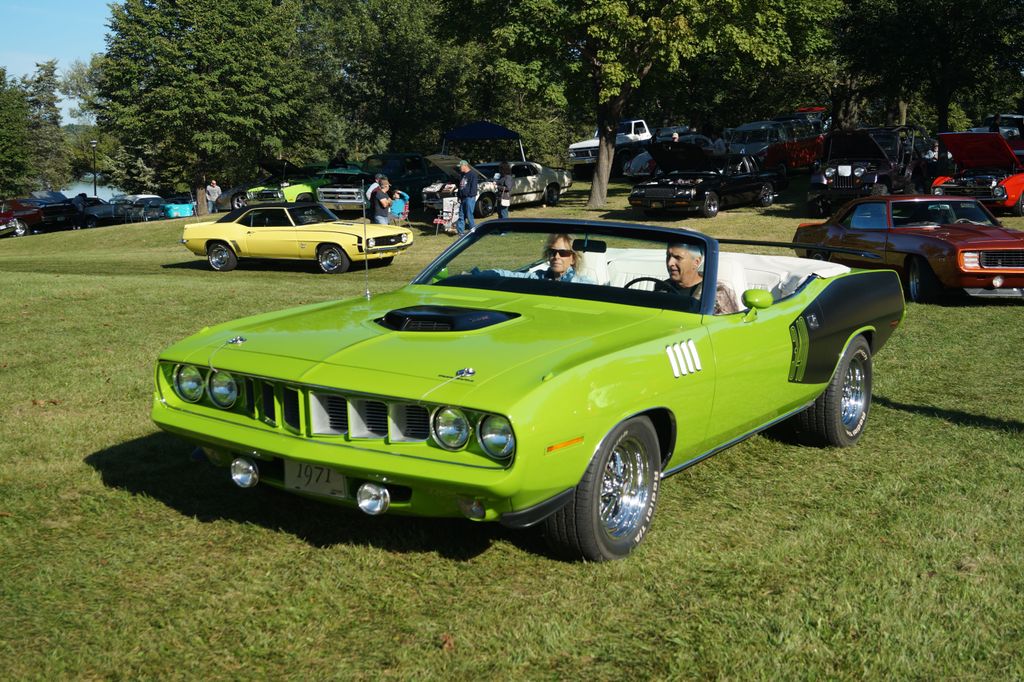
8. **The Plymouth Barracuda**The Plymouth Barracuda is another formidable muscle car that, much like the 442 or GTO, often receives less discussion than its contemporaries, yet its legacy is no less significant. Introduced initially in 1964 as a direct competitor to the wildly popular Ford Mustang, the ‘Cuda quickly evolved beyond just a nickname, becoming the designation for the high-performance variant of the Barracuda lineup. This historic rivalry immediately sparks a compelling question: if the Mustang were to fully transition to an all-electric platform, moving beyond the Mach-E, could a modern, electrified Barracuda emerge once again as its potent rival? Interestingly, author Tim Dorsey even titled one of his novels *Electric Barracuda*, perhaps foreshadowing such a possibility.
Historically, the Barracuda shared its fundamental platform with the Dodge Challenger, creating a natural lineage between the two. This shared ancestry leads to another intriguing scenario: if the Challenger, as we know it, does not make a triumphant return in the modern, electrified era, could the Barracuda potentially step into that void instead? Automakers frequently engage in the practice of reviving iconic nameplates, seeking to tap into a rich vein of nostalgia while simultaneously appealing to new generations. While some automotive classics might indeed be better left in the annals of history, preserved in their original glory, only time will truly reveal whether the Barracuda name could once again ‘swim back into relevance,’ re-energized by an electric future and ready to challenge new rivals on the open road.
Car Model Information: 1971 Plymouth Barracuda
Caption: 1970 Hardtop Coupe
Name: Plymouth Barracuda
Manufacturer: Plymouth (automobile)
Production: 1964–1974
Assembly: Fenton, Missouri,Hamtramck, Michigan,Maywood, California,Windsor, Ontario
Layout: Front-engine, rear-wheel drive layout
Class: Pony car
Categories: 1970s cars, All articles with dead external links, All articles with unsourced statements, Articles with dead external links from February 2018, Articles with dead external links from January 2022
Summary: The Plymouth Barracuda is a two-door pony car that was manufactured by Chrysler Corporation from 1964 through 1974 model years.
The first-generation Barracuda was based on the Chrysler A-body and was offered from 1964 until 1966. A two-door hardtop (no B-pillar) fastback design, it shared a great majority of parts and bodywork with the Plymouth Valiant, except for the distinctive wraparound rear glass.
The second-generation Barracuda, though still Valiant-based, was heavily redesigned. Built from 1967 through 1969, it was available as a two-door in fastback, notchback, and convertible versions.
The third generation, offered from 1970 until 1974, was based on the Chrysler E-body, exclusive to it, and the slightly larger Dodge Challenger. A completely new design, the two-door Barracuda was available in hardtop and convertible body styles.
Get more information about: Plymouth Barracuda
Buying a high-performing used car >>>
Brand: Plymouth Model: Barracuda
Price: $69,999 Mileage: 102,036 mi.
Read more about: Automotive Failures: Cars We’d Prefer to Forget From Decades Past
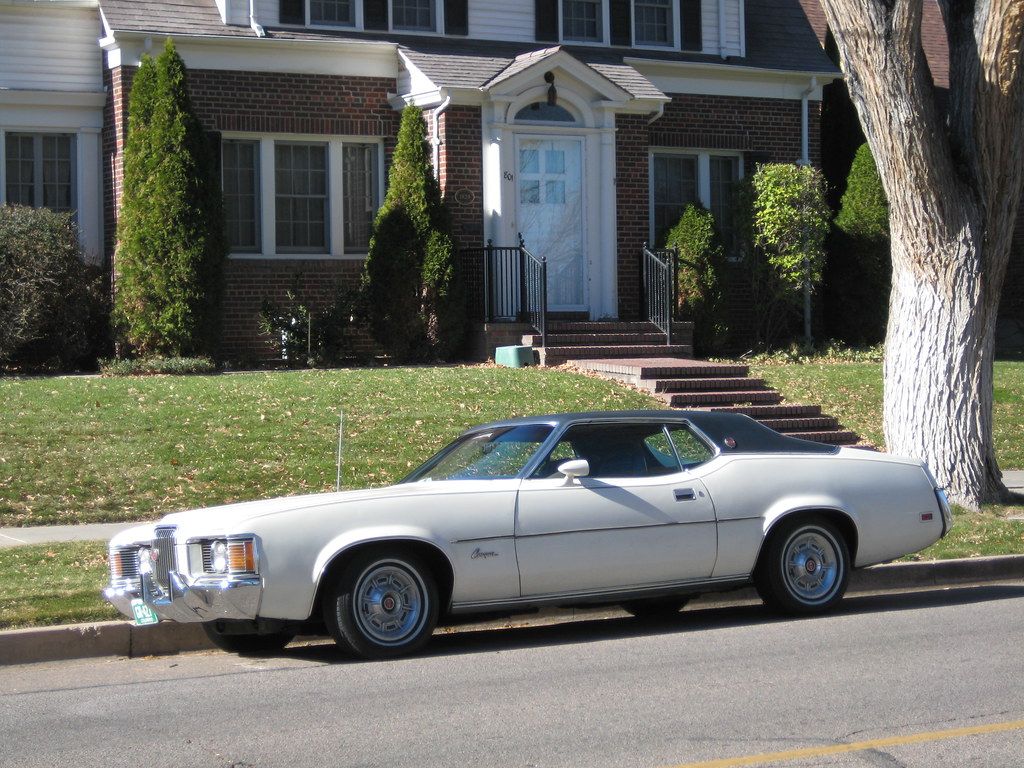
9. **The Mercury Cougar**Much like the Oldsmobile 442, Plymouth Roadrunner, Plymouth Barracuda, and Pontiac GTO, a muscled-up Mercury Cougar is a truly rare sight in today’s automotive landscape, perhaps even the rarest among these revered classics. However, just like Oldsmobile, Plymouth, and Pontiac, Mercury itself is a defunct brand, though its legacy falls under the Ford rather than the Chrysler or General Motors corporate umbrella. While a strong argument can be made that some automotive classics are best left untouched, preserved as artifacts of their time, the sight of more of these iconic cars on the road today, in any form, would undeniably be a welcome spectacle for enthusiasts.
The Mercury Cougar did experience a brief, albeit ultimately unsuccessful, revival in the late 1990s and early 2000s. However, it is unequivocally the classic models, with their distinctive lines and powerful presence, that truly capture the hearts and imaginations of devoted enthusiasts. Realistically, the prospect of a brand-new Cougar seeing production again is exceedingly slim. And, should internal combustion engines indeed disappear entirely from the new car market, the only truly viable option for a future Cougar would, by necessity, involve an electric conversion. To introduce a modern EV under the revered Cougar name, for many purists, would almost certainly be considered sacrilege.
Yet, in today’s rapidly and relentlessly evolving automotive landscape, where innovation often clashes with tradition, we must all prepare ourselves for the most unexpected possibilities, no matter how controversial or challenging they may seem. The Cougar, historically having been a close relative to the Mustang, often serving as its more luxurious or European-inspired counterpart, highlights a shared DNA that could, in an electrified future, be reinterpreted with surprising results. The spirit of these iconic machines, whether it’s through careful preservation, ambitious aftermarket adaptation, or radical electrification, continues to spark debate and inspire a vision for what a muscle car can truly be.
Car Model Information: 1978 Mercury Cougar XR7
Name: Mercury Cougar
Caption: 1969 Mercury Cougar (first generation)
Manufacturer: Mercury (automobile)
Layout: Front-engine, rear-wheel-drive layout
ModelYears: 1967–1997,1999–2002
Class: Pony car,Personal luxury car,Mid-size car,Sport compact
Categories: 1960s cars, 1970s cars, 1980s cars, 1990s cars, 2000s cars
Summary: The Mercury Cougar is a series of automobiles that was sold by Mercury from 1967 to 2002. The model line is a diverse series of vehicles; though the Cougar nameplate is most commonly associated with two-door coupes, at various stages in its production, the model also was offered as a convertible and a hatchback. During its production as the mid-size Mercury line, the Cougar was also offered as a four-door sedan and five-door station wagon.
In production for 34 years across eight generations (skipping the 1998 model year), the Cougar is second only to the Grand Marquis (36 years) in the Mercury line for production longevity. 2,972,784 examples were produced, making it the highest-selling Mercury vehicle. During the 1970s and 1980s, the marketing of the Mercury division was closely associated with the Cougar, with promotional materials advertising Mercury dealers as “The Sign of the Cat” with big cats atop Lincoln-Mercury dealer signs. Cat-related nameplates were adopted by other Mercury lines, including the Bobcat and Lynx.
During its production, the Cougar was assembled at the Dearborn Assembly Plant (part of the Ford River Rouge Complex) in Dearborn, Michigan from 1967 until 1973, San Jose Assembly (Milpitas, California) from 1968 into early 1969, Lorain Assembly (Lorain, Ohio) from 1974 until 1997, and at Flat Rock Assembly (Flat Rock, Michigan) from 1999 through 2002.
Get more information about: Mercury Cougar
Buying a high-performing used car >>>
Brand: Mercury Model: Cougar
Price: $8,500 Mileage: 31,388 mi.
Read more about: 10 Dirt-Cheap Classic American Cars That Turn Heads Everywhere They Go for Under $10,000
As we navigate this fascinating crossroads, the future roadmap for muscle cars is clearly defined by a fusion of tradition and innovation. Manufacturers are acutely aware of the deep significance of their brand legacies, yet they are simultaneously embracing the inevitable shift towards electrification with both enthusiasm and strategic foresight. Dodge, for instance, is not just participating in this shift; it is actively paving the path towards an electric future with its new all-wheel-drive electric coupe concept, which boldly boasts various power levels meticulously tailored to different performance trims, ensuring that raw power remains accessible. This period of industrial transition is underscored by monumental events, such as the Dodge Challenger SRT Demon 170 marking the end of an era for pure, unadulterated gasoline-powered muscle cars, proposing a compelling future where electrifying performance and sustainable powertrains can not only coexist but thrive. The very symbolism of launching ‘the last super-fast gasoline muscle car’ signifies a truly pivotal moment for muscle car enthusiasts and manufacturers alike, a turning point that redefines speed, power, and legacy. Meanwhile, the Ford Mustang, a timeless classic, embodies resilience and an remarkable adaptability, still thriving in its original form as a two-door coupe and convertible, a testament to its enduring design and appeal. It stands as perhaps the only muscle car that has managed to survive and evolve within the modern automotive era without losing its initial, cherished identity, showcasing an extraordinary journey of historic evolution. In the face of such profound change, the automotive community remains engaged and hopeful, fueled by persistent rumors about the muscle car’s future, such as the potential revival of iconic nameplates like the Barracuda under Dodge’s expanded electrified umbrella. With bold moves like Dodge revealing its first fully electric muscle car within the Charger lineup, signaling a clear, unwavering transition toward sustainability and innovation, the muscle car’s enduring appeal is not only likely but destined to capture the imagination of future generations, albeit through a dazzling new electric lens.



